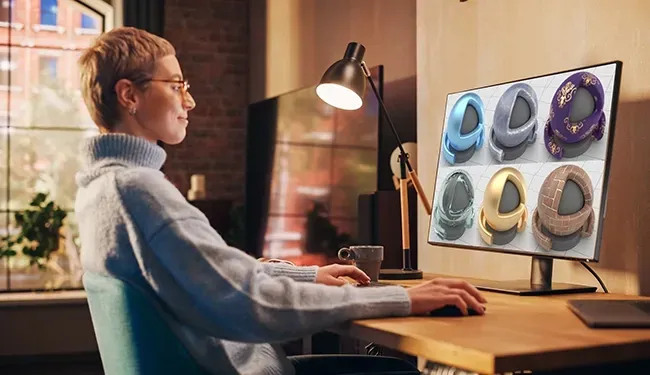
PBR optimization and how it works in 3 simple steps
Table of Contents
What is a PBR material and why is it needed?
PBR reproduces real-world materials accurately in digital rendering. It controls how surfaces interact with lighting, including reflection, refraction, and absorption. Without PBR, artists must guess which details to include, and material behave inconsistently in different lighting environments, for example between a sunlit street and an indoor basement playroom.
Important terms:
- Material Realism: PBR reproduces real-world materials accurately in digital rendering. It controls how surfaces interact with lighting, including reflection, refraction, and absorption. PBR follows the physical laws of energy conservation. The total incoming light energy is accounted for in absorbed and reflected light.
- Albedo, Roughness, and Metalness: Albedo is the surface color with no reflections (diffuse reflectance). Roughness determines how smooth or rough the surface is, how sharp or blurry reflections and refractions will be. Metalness controls whether a material is metallic or dielectric (non-metallic), which changes core reflectivity behavior.
- Textures and Maps: PBR relies on texture bitmaps (e.g., albedo, normal, roughness) to define surface properties. Artists create these bitmaps to achieve accurate and visually appealing renderings.
- Multiple Materials: Real-world assets are usually made with multiple separate PBR materials (wood, plastic, glass, etc.). These need to be optimized together into fewer simplified PBR materials, for efficient interactive rendering.
What does a typical PBR material workflow consist of?
A PBR material consists of ingredients and settings which are optimized for good rendering in different kinds of lighting, especially when aiming at real-time 3D and XR applications:
| Aspect of PBR materials | Why is it important? | Example Maps |
| Colors use physically-based values | Accurate colors allow surfaces to respond to lighting in a realistic and consistent way | 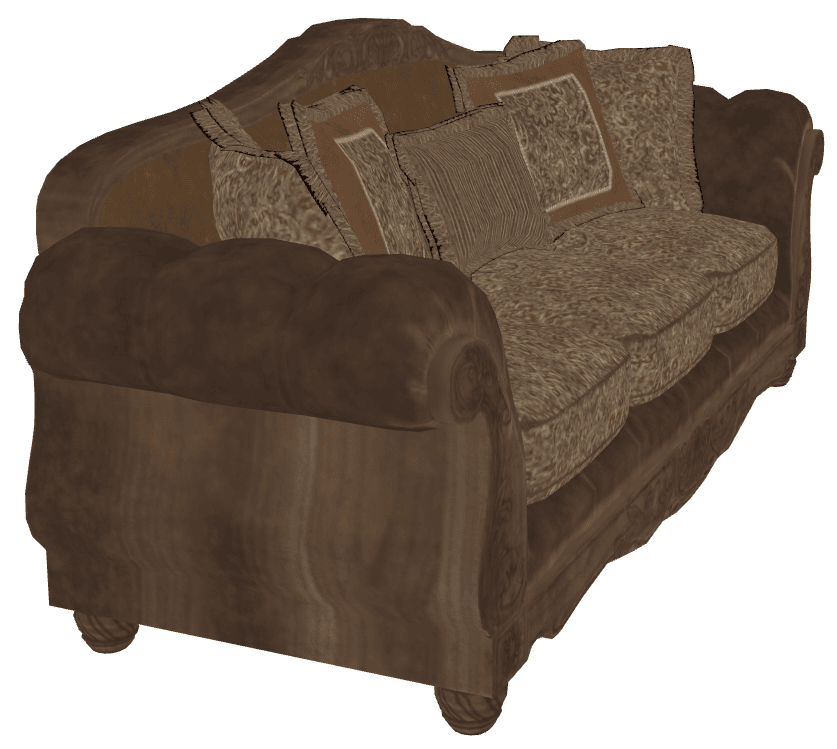 Base Color map Base Color map |
| A normal map adds shading detail | Lighting and shading are improved by including fine surface details, and normal mapping helps low-poly materials look like high-resolution materials | 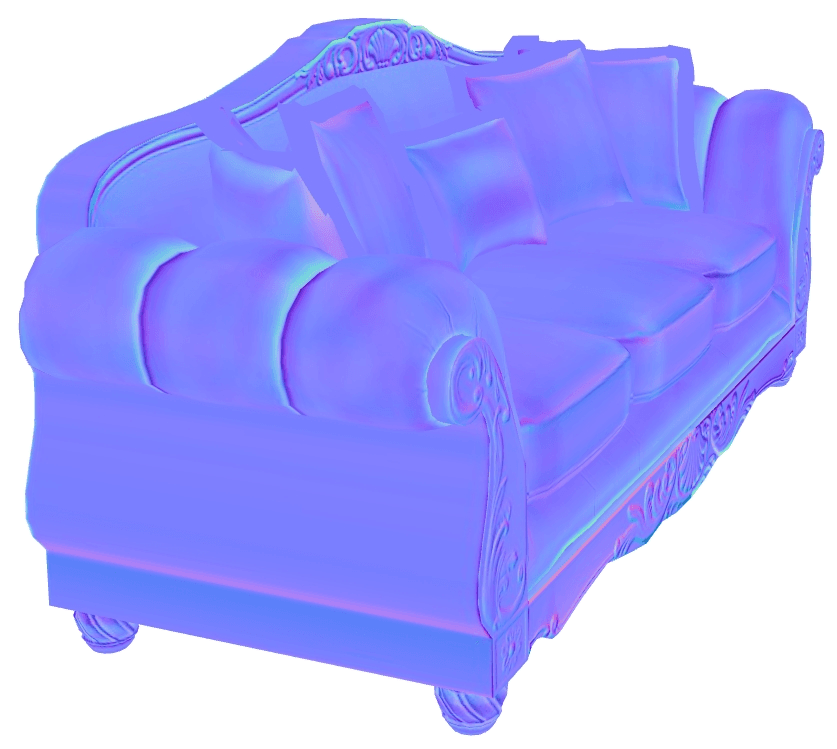 Normal map Normal map |
| Use a roughness texture to simulate glossy imperfections | Surfaces are not perfectly smooth but have variations in glossiness, use a texture to add realism via human touches and fine wear | 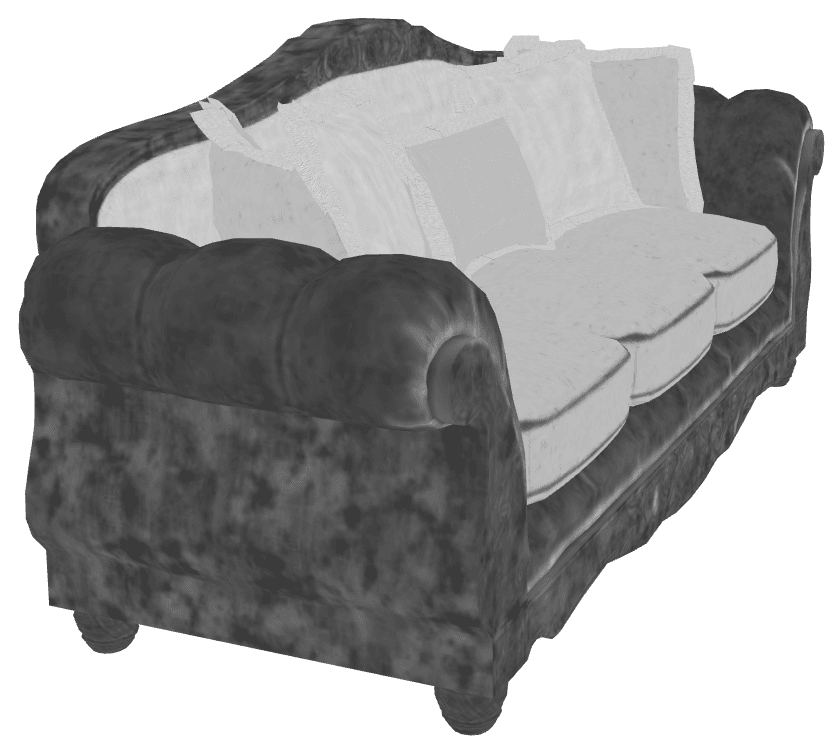 Roughness map Roughness map |
| Ambient occlusion creates realistic lighting for AR and XR rendering | Soft shading in crevices helps real-time lighting to behave realistically on textured materials | 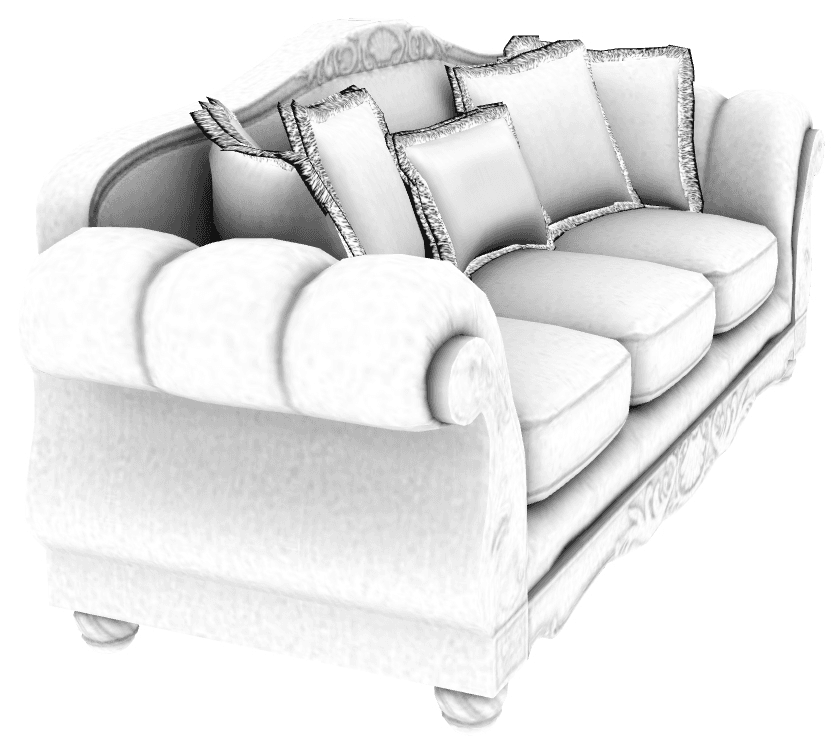 Occlusion map Occlusion map |
| Use unique PBR materials for each part | Real-world objects are made of multiple surface types: wood, metal, glass, etc. Each should be its own PBR material properties. | 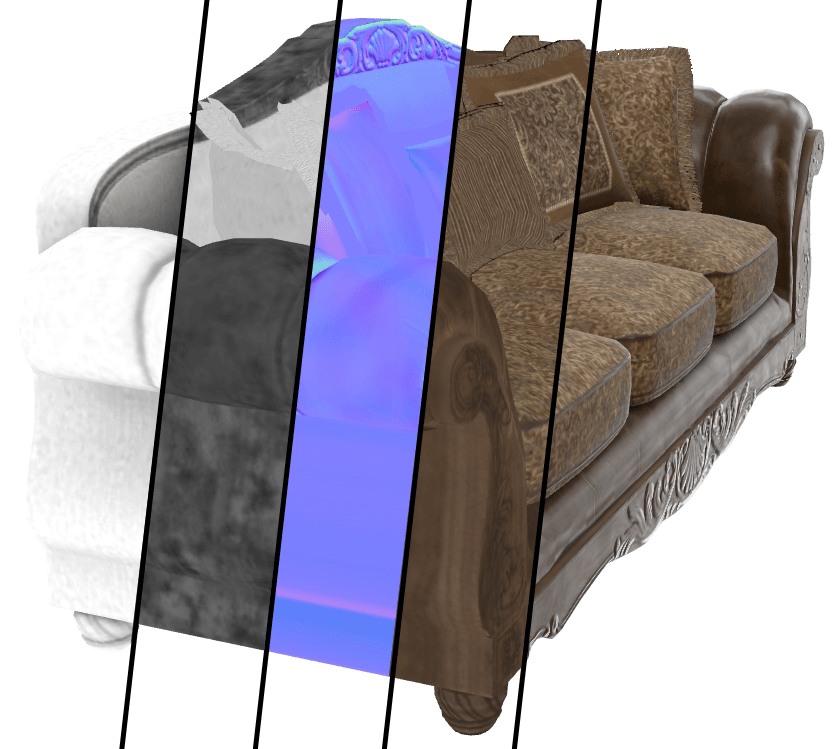 PBR materials PBR materials |
Optimize a model with PBR materials in 3 simple steps
- Upload 3D model. Upload your 3D model to RapidPipeline, which supports PBR materials by default. If you don’t have an account yet, sign up for free.
- Launch optimization. Dial in your own target settings (polygon count, texture resolutions, baking settings, …) in a custom preset (option 1) OR choose a factory preset (option 2).
Example for using a factory preset: Choose the “Single-Item Mobile” preset to prepare your asset in a way that works well for most assets and mobile phones, for Web-based 3D and mobile AR. Select the models you want to optimize by checking them in the list and run the 3D Processor. - Download results. Download your resulting files for use in your own application. Typically people will use .usdz and .glb files for delivering assets with PBR materials, which can be rendered realistically on the web, on mobile devices, and in AR/VR headsets. Your assets with multiple separate PBR materials are combined together into a single material, but the original look is faithfully preserved, assets are optimized for efficient delivery.
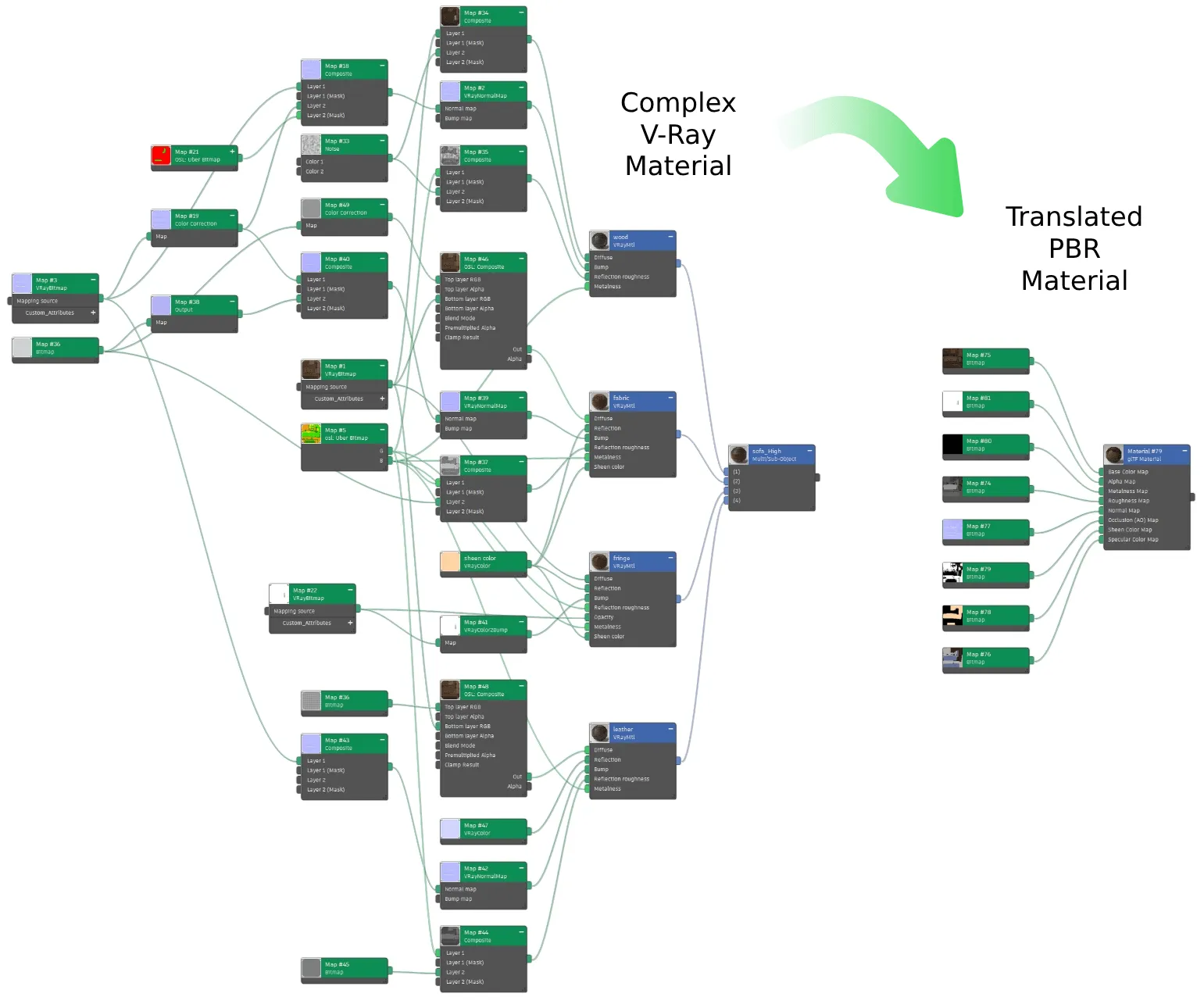
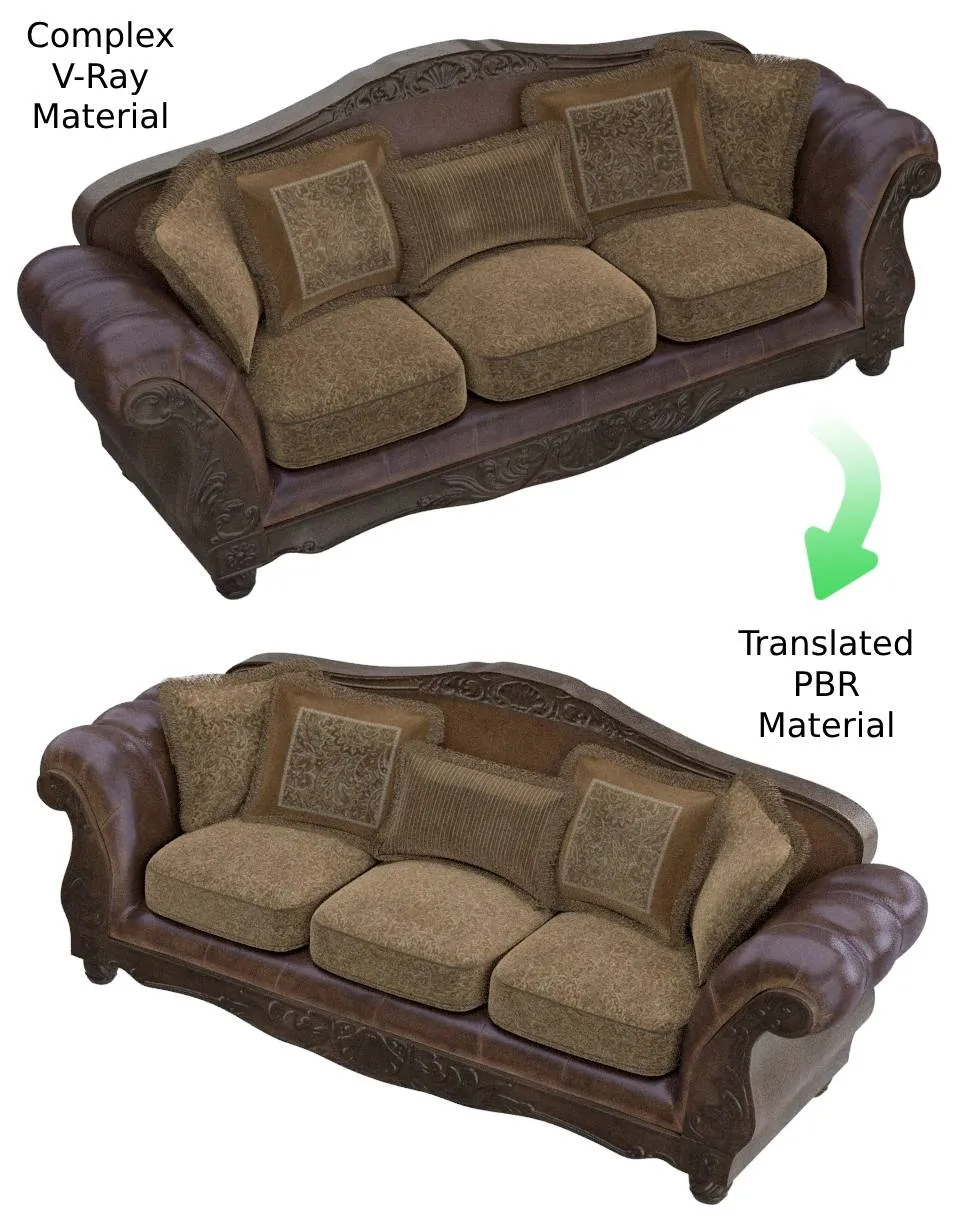
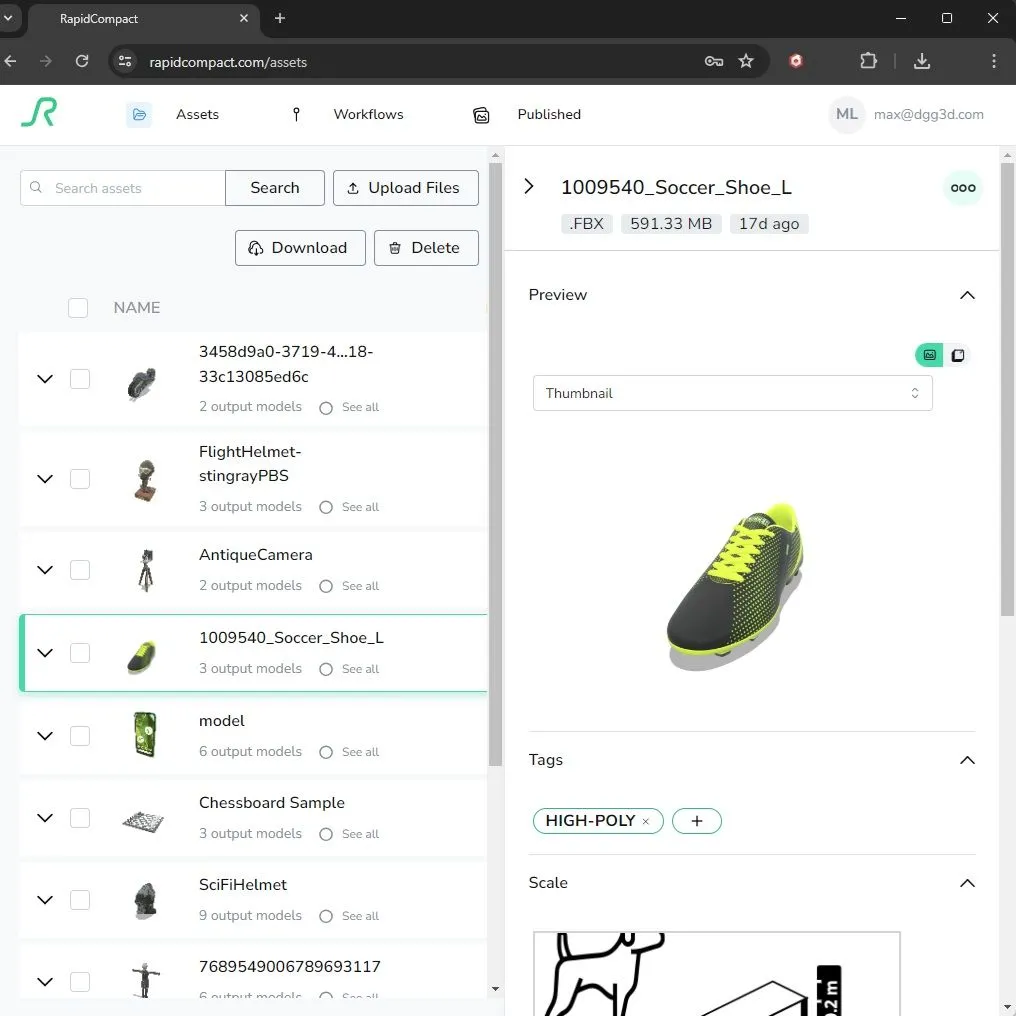
Meet the Author

Eric Chadwick
Senior 3D Technical Artist
Eric is a Senior 3D Technical Artist at DGG. He is a frequent Khronos Group contributor in the 3D Formats and 3D Commerce Working Groups, defining specifications and writing guidelines to streamline 3D asset creation for the retail industry. He has more than 20 years’ experience in real-time 3D content development for games, architectural rendering, and education; and is an administrator for the Polycount web community, the leading forum for 3D game artists to critique each other’s work and share creation techniques. Eric received a Bachelor’s degree in Fine Art from the Rhode Island School of Design with a concentration in illustration, collaborated with the Brown University School of Medicine on anatomy for artists, and studied in the European Honors Program in Rome.